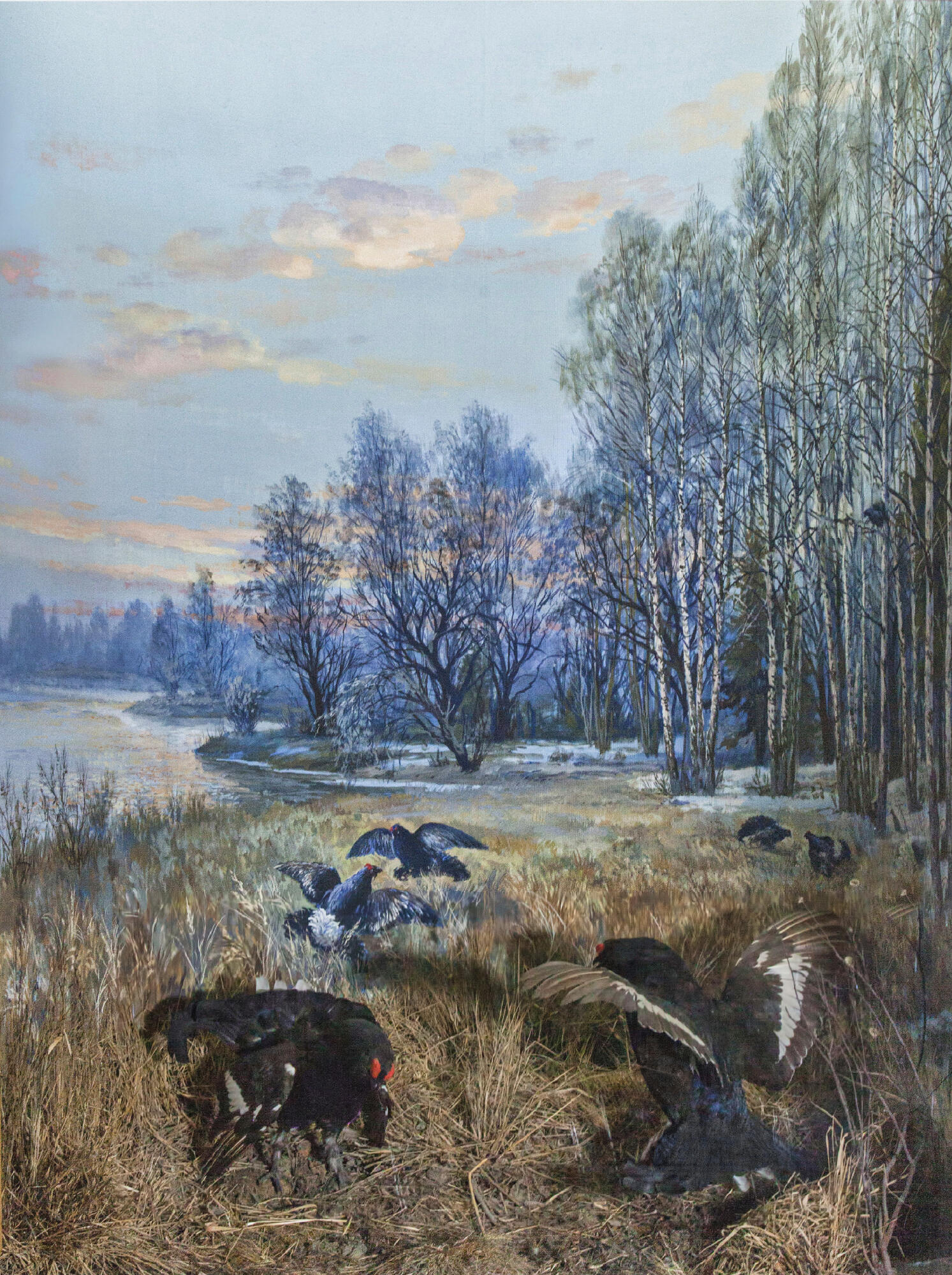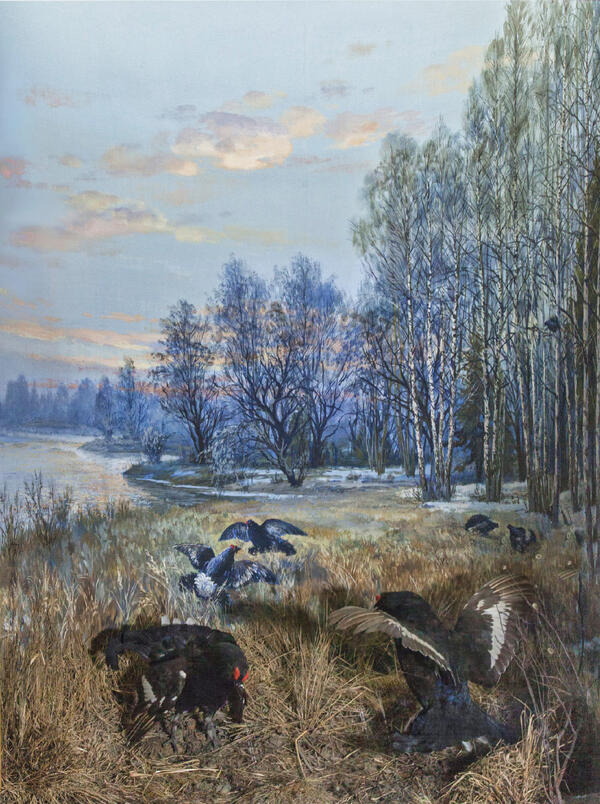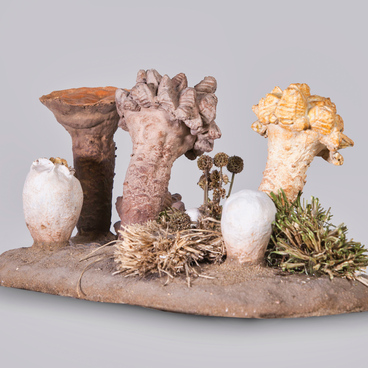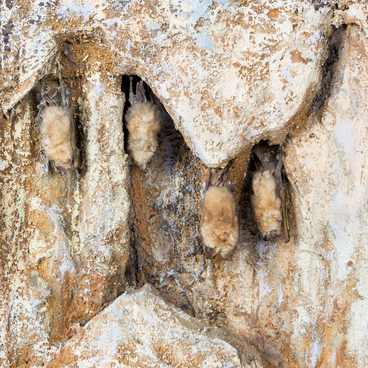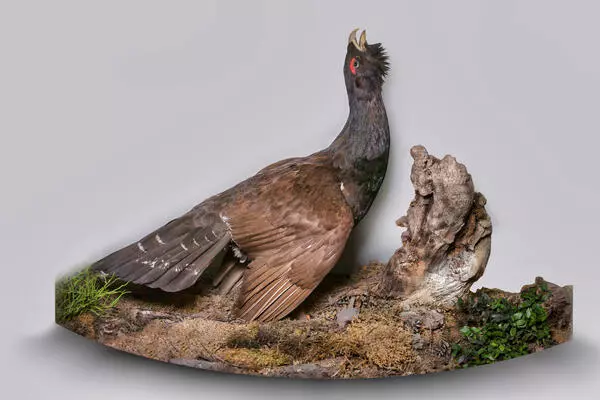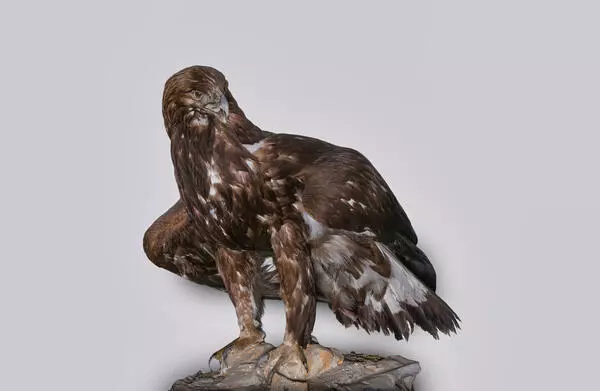Black grouse live in forest, forest-steppe, and some steppe zones of Europe and Asia—from the British Isles to the Korean Peninsula. They settle mainly where dense woods are interspersed with open spaces. This bird is also called blackcock (or Lyrurus tetrix).
In Russia, black grouse can be found in birch groves, copses, woodlands with berry bushes, river valleys, along the edges of swamps, and flood-meadows. In Western Europe, they live in moorlands, and in the west of Kazakhstan—in the bushes.
Black grouse are sedentary, non-migratory birds; they begin to migrate only if there is not enough food in winter or if the population increases drastically. Seasonal migrations of these birds are occasional.
The mating season of black grouse, which is called lekking (or lek mating), begins from late March to early April.
Mating grounds are located along forest edges and glades (clearings), usually in high places where the snow melts first. Black grouse begin lekking at dawn. Each experienced male black grouse or ‘cock’ has his territory, which he carefully guards. Young males do not have their place, so they walk along the periphery of the mating grounds. Most of the time, 2–5 males are lekking (engaging in competitive displays and courtship rituals), sometimes, just one. Nowadays, large leks holding dozens of birds are extremely rare.
If no one disturbs the black grouse, they can lek at the same spot for many years.
The male black grouse performs a song that consists of two parts: the first part is murmuring and bubbling noises and the second part is harsh grating sounds (or guttural hisses). And while that happens, the female clucks very quickly.
During courtship, male black grouse puff up their feathers to look bigger. They sing, run around the lek with their wings lowered to the ground, their tail feathers spread into a wide fan and their neck stretched, they spin in circles and jump. There are often contests and fights between the males, but usually without bloodshed. The birds are so involved in the mating process that they often fail to notice predators around them. Black grouse do not have a special alarm call, but as soon as one male notices, a potential threat and takes off, the rest do not hesitate to leave the glade.
Females appear at the lek at the height of the breeding season—in early April. During lekking displays and courtship, they simply show themselves to the males, while keeping a distance from them. Black grouse do not mate for life or even for long periods.
The active mating games begin at dawn and usually last about 3 or 4 hours. Most of the day is spent rehearsing strutting and posing.
Black grouse lekking lasts longer than wood grouse lekking, and it usually ends by the end of May. However, by that time, almost only young males exhibit lekking behavior while adult males no longer lek.
In Russia, black grouse can be found in birch groves, copses, woodlands with berry bushes, river valleys, along the edges of swamps, and flood-meadows. In Western Europe, they live in moorlands, and in the west of Kazakhstan—in the bushes.
Black grouse are sedentary, non-migratory birds; they begin to migrate only if there is not enough food in winter or if the population increases drastically. Seasonal migrations of these birds are occasional.
The mating season of black grouse, which is called lekking (or lek mating), begins from late March to early April.
Mating grounds are located along forest edges and glades (clearings), usually in high places where the snow melts first. Black grouse begin lekking at dawn. Each experienced male black grouse or ‘cock’ has his territory, which he carefully guards. Young males do not have their place, so they walk along the periphery of the mating grounds. Most of the time, 2–5 males are lekking (engaging in competitive displays and courtship rituals), sometimes, just one. Nowadays, large leks holding dozens of birds are extremely rare.
If no one disturbs the black grouse, they can lek at the same spot for many years.
The male black grouse performs a song that consists of two parts: the first part is murmuring and bubbling noises and the second part is harsh grating sounds (or guttural hisses). And while that happens, the female clucks very quickly.
During courtship, male black grouse puff up their feathers to look bigger. They sing, run around the lek with their wings lowered to the ground, their tail feathers spread into a wide fan and their neck stretched, they spin in circles and jump. There are often contests and fights between the males, but usually without bloodshed. The birds are so involved in the mating process that they often fail to notice predators around them. Black grouse do not have a special alarm call, but as soon as one male notices, a potential threat and takes off, the rest do not hesitate to leave the glade.
Females appear at the lek at the height of the breeding season—in early April. During lekking displays and courtship, they simply show themselves to the males, while keeping a distance from them. Black grouse do not mate for life or even for long periods.
The active mating games begin at dawn and usually last about 3 or 4 hours. Most of the day is spent rehearsing strutting and posing.
Black grouse lekking lasts longer than wood grouse lekking, and it usually ends by the end of May. However, by that time, almost only young males exhibit lekking behavior while adult males no longer lek.
